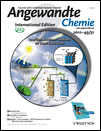Elucidation of Spore-Photoproduct Formation by Isotope Labeling†
We thank Prof. Eric Long at IUPUI for helpful discussions, and the National Institute of Environmental Health Sciences (R00ES017177) as well as the IUPUI startup fund for financial support. The NMR and MS facilities are supported by National Science Foundation MRI grants CHE-0619254 and DBI-0821661, respectively.
Graphical Abstract
Doing some damage: Spore photoproduct (SP) is the major DNA photodamage product in bacterial endospores. NMR spectroscopic studies of deuterium-labeled TpT dinucleotides have revealed details of the mechanism for SP formation (see scheme). Upon UV irradiation of [D3]TpT (with a 3′-T CD3 group), a deuterium atom was transferred exclusively to the 6-Hpro-S position. The migrated atom was a hydrogen atom when [D4]TpT with a 3′-T CH3 group was used.





